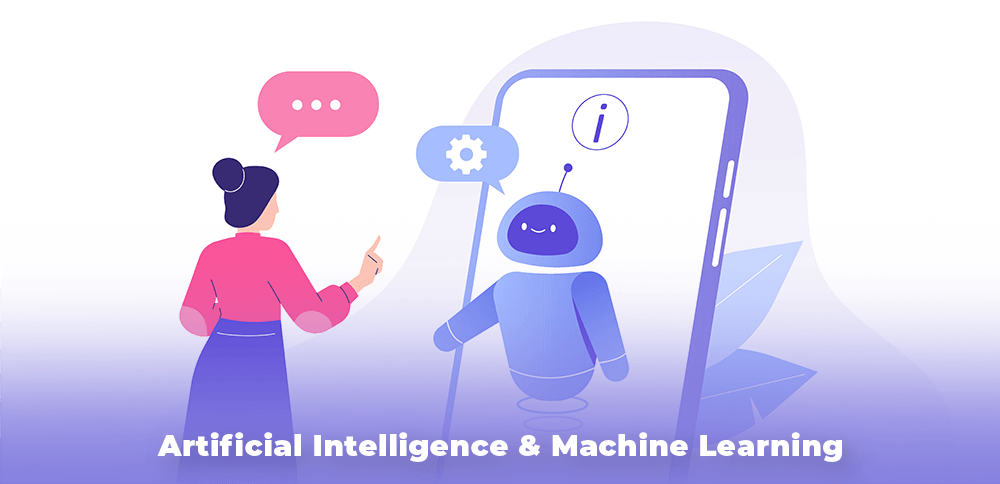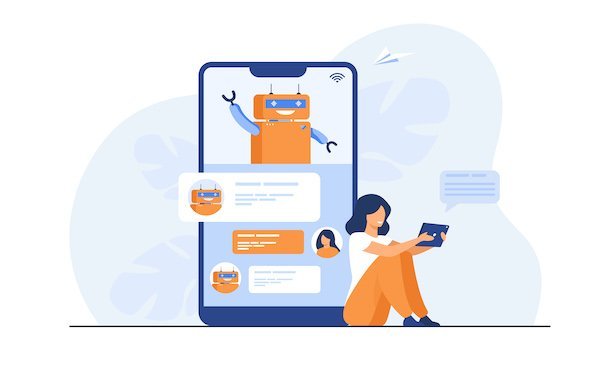The Revolution of Artificial Intelligence (AI) and Machine Learning (ML) in Business

With the revolution of AI and ML in business, it’s more important than ever to uncover what Artificial Intelligence and Machine Learning mean. As the names suggest, the central premise is to teach an embedded device or minicomputer how to accomplish tasks on its own and to understand requests, work with the data being provided and understand that data to reach a decision or result. Think of it like this: some or if not all of us have a mobile phone, and on that phone, we have digital assistants like Siri, Bixby, Cortana, or the Google assistant. When we open the search bar or press its designated button, we can then ask them a question; they will process the request based using historical data and then provide an answer. This answer might not be the correct one, but as time goes on, it will begin to understand your questions and more about you as a person based on multiple data points and historical data being collected through your phone.
Here are brief descriptions AI and ML:
Artificial Intelligence is the broad discipline. It revolves around the algorithm and computational process used to train a system to start crunching numbers to get a more accurate solution. Or for lack of better words giving machines the ability to learn.
Machine Learning is a subset of AI, more focused on making iterative changes and optimizing some sort of process surrounding an operation and process. In Machine Learning, a machine will gradually become smarter and improve processes without human intervention.
With AI, we can start asking questions related to our hobby, and at some point the system will understand what we do, when we do it, and how they can recommend a store, product, or answer based on this context. With Machine Learning, we are more concerned about say the workings and maintenance of something like an elevator. Otis makes smart elevators, and some metrics they might use would be how long the lift has been in service, what times it operates, what load it receives on average, based on past data when did they commonly break or shut down. By identifying multiple patterns and data points, you can begin to assess machine health and wear and tear. This also stems more into another hot topic, which is predictive analytics.

Now, how does this relate to business? Numerous companies offer machine learning services, AI Development Services, and they each claim to be a leading Machine Learning app development company. So the technology is garnering some significant attention from tech belts. Thinking that AI and ML are fresh and exciting is different compared to how you can use these technologies to make your business run smoother or to increase your profits. In business it is important that you can see an actionable lifecycle when embarking on any new venture. In AI and ML, this holds in the same way. There would be no point in trying to integrate AI or ML into your solutions without understanding the benefit and how you will get a return on your investment. To break it down into some everyday examples that won’t give you a headache, let’s look at how other successful businesses are using AI and ML.
Much of what we do with machine learning happens beneath the surface. Machine learning drives our algorithms for demand forecasting, product search ranking, product and deals recommendations, merchandising placements, fraud detection, translations, and much more. Though less visible, much of the impact of machine learning will be of this type — quietly but meaningfully improving core operations. – Jeff Bezos
Shopping has always been something people both love and hate. The average consumer is always looking for information and ways to find the ideal product or service that fits their needs while providing within their budget and not taking too long to track down. In most circumstances, it comes down to the time value of money, or TVM. In every economic exchange, there is a choice. Spend more time to find a better deal, save money, or pay someone else for the information and solution. It is a little more complicated than this, but the premise remains the same.
With the introduction of Artificial Intelligence, it is becoming more convenient and efficient to select and purchase. The internet now houses the sites of millions of stores and companies that provide information about themselves and what they offer. Search engines can look through this information and direct you to the best match based on your initial search query, and with ever learning programs, you are defined as a user profile or persona.
There are numerous use cases and processes in AI, but regarding shopping, a few endure. Natural language processing (NLP), image classification and object detection, chatbots, and customer journeys. These are used to understand what you’re asking, how to classify better what your selling, what a customer is looking at, how to respond to frequently asked questions and how to personalize a customer’s experience to ensure they receive proper assistance and guidance.

Machine Learning, being a subset of AI, is more suited to trying different things to see what works. A great example of this is shown through dating apps like Tinder. Tinder uses algorithms to rearrange a user’s photos to test out which order of say five photos gets the best result. If a user had been placing a picture of themselves with their adorable dog in the 3rd position, Tinder might find that putting it into the 1st position increases a user’s matching rate by 30%. Now that is information worth knowing. In dating apps, it doesn’t stop there. It’s also possible to weed out fake accounts by monitoring activity, response rates, the number of photos used, and the number of reports filed by other users to assess whether a profile is deemed a bot.
In dating, there is nothing more challenging than finding someone who is a good fit for your personality, and who better to help you pick than an artificial intelligence matchmaker.

It is no secret that large corporations are looking for ways to reach their customers better. It is also true that with the introduction of newer technologies, companies are both ready and willing to throw their hat into the ring to pioneer a unique solution. Combining AI in VR and AR applications allows companies to get a high-level view of how their users behave. In VR and AR, it is all about creating an experience; AI is about understanding how users respond to experiences, so the combination of the two is a natural fit.
With an eye-tracking AI algorithm, companies like Kellogg can see where users are looking during a VR experience. In a localized AR experience, one in which users need to visit a physical location, AI can assess the activity at this spot and reason the efficacy of that experience and whether to improve or move. In tourism applications, you can immerse yourself in a VR view of a travel destination, and AI can help a potential customer make a decision by providing say the top hotels, distances to hot spots, places to eat, and other data points. These suggestions can and will change depending upon the user’s reactions and buyer persona. If someone does not respond well to information about Italy’s historical sites, they may have a different interest, which the algorithm will try to pin down.
I am telling you, the world’s first trillionaires are going to come from somebody who masters AI and all its derivatives, and applies it in ways we never thought of. – Mark Cuban
Let’s discuss chatbots a little deeper as this is the more common example that people can relate to. A lot of inbound marketing companies can provide you with a basic chatbot that allows you to collect necessary customer information, answer simple questions and qualify a prospect before an actual human needs to get involved in the conversation. Chatbots also have a place in customer service. Amazon, who is a massive player in AI and E-commerce, has a customer support bot for handling minor shipping issues and other customer questions. From our own experience, when something never arrived at the office, we let the bot know the package was not delivered, and they added a new item to our cart at no cost, which we then receive in the following days at no further expense. That is a much more streamlined experience when compared to years past. We have also seen an example from Google during their 2019 event, where a bot spoke on behalf of a human and booked a visit to a hair salon. Talk about frighteningly concise.

How can we build artificially intelligent mobile apps then? Maybe the above examples don’t seem to relate to your business, but you have an idea of what you are looking to have completed enhancing your B2B or B2C solution. Companies of all sizes are finding new ways to speed up, optimize and reduce friction in user performance. Don’t miss out on this window of opportunity to give your company a competitive advantage in your vertical.
You need to speak to Artificial Intelligence & Machine Learning Solution Provider. Talk to our team here at Zco, and we can help you understand the ins and outs of what AI and ML can do for your business. Understand the costs associated and the time to market and the ongoing work involved to produce a robust, user-friendly, and lucrative.
Talk to Zco, a premier Artificial Intelligence and ML developer. We can help you get your project started and on the right track. We will work with you every step of the way to ensure the result is something your both happy with and one that we are proud of. Contact us today!
